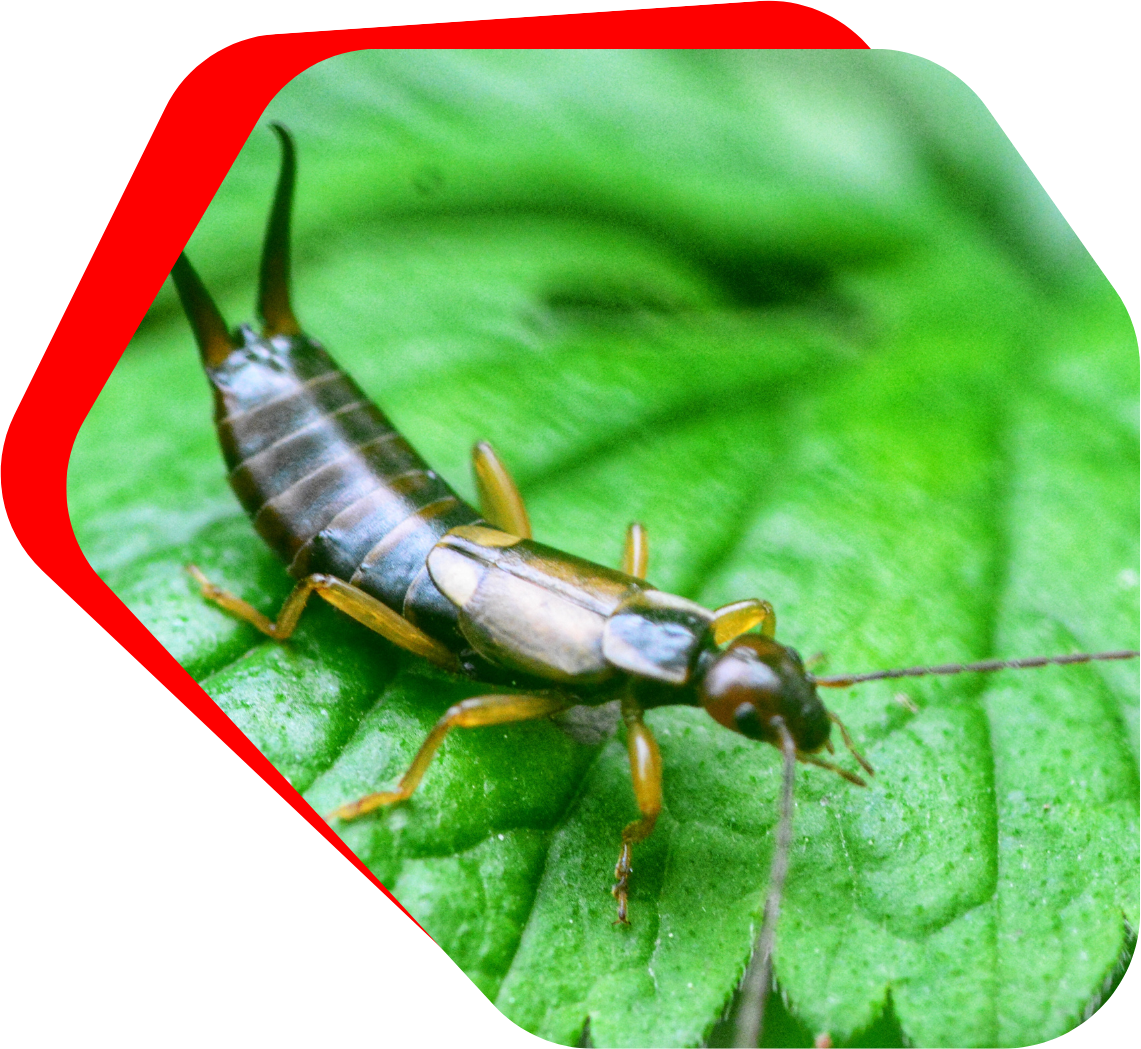
Slide title
Write your caption hereButton
Earwig Exterminator

Slide title
Write your caption hereButton
Earwig Exterminator
When most Maryland residents think of household pests, the common culprits that come to mind are cockroaches, ants, or spiders. However, a lesser-known but equally problematic pest often lurks in the shadows, particularly during the warmer months - the earwig. Earwigs are nocturnal insects characterized by their elongated bodies, ranging up to 2 inches, and their distinctive forceps-like pincers, which they use primarily for self-defense and capturing prey. While their name might suggest otherwise, rest assured that the myth of earwigs crawling into human ears is largely unfounded.
While there are over 1,800 species of earwigs worldwide, the Baltimore area mainly plays host to the European species (Forficula auricularia). This invader is recognizable by its reddish-brown color and yellowish legs. Another species occasionally found is the striped earwig, which can be identified by the prominent yellow and dark stripes on its body.
They are mostly outdoor pests, thriving in dark, damp areas. They’re often found in garden debris, mulch, and underneath stones. However, when they make their way indoors, they can become quite the nuisance.
While not all species feed on plants, those that do can wreak havoc in gardens. They are known to feed on flowers, vegetables, and other ornamental plants, leaving behind noticeable damage. As seasons change and the outdoor environment becomes less hospitable, they can infiltrate homes in search of food and warmth. They are attracted to areas that retain moisture, such as bathrooms, basements, or laundry rooms. Though they aren't harmful to humans, their appearance can be startling. Those large pincers, although generally used in mating displays or to grasp prey, can give a mild pinch if they feel threatened. The forceps or pincers at the end of their body can be used to determine its gender. Males typically have more curved pincers, while females sport straighter ones. Some species are flightless, but others possess short wings hidden beneath hard wing cases and can fly short distances.
Many Baltimore residents, upon discovering them in their homes, turn to DIY solutions, hoping for a quick fix. However, most of these methods fall short of delivering long-term solutions:
- Diatomaceous Earth: While this fine powder can harm some insects, earwigs are often too resilient for it to be effective.
- Essential Oils: While some essential oils may deter them temporarily, they usually return once the scent dissipates.
- Over-the-counter sprays: Many of these are general insecticides that may not be tailored to effectively eliminate earwigs. Moreover, improper application can also pose risks to pets and humans.
Trying DIY methods can lead to wasted time, money, and increased frustration. Furthermore, it might allow the population to grow, complicating the infestation even more. At Rosenbloom Pest Control, we understand the unique challenges posed by earwigs in the Baltimore area. Our team of trained professionals is equipped with the knowledge and tools to address the root of the problem, ensuring not just elimination but also prevention.
Instead of spending valuable time and resources on ineffective DIY methods, entrust the safety and comfort of your home to Rosenbloom. We prioritize the well-being of our clients, offering tailored solutions to ensure a pest-free environment. Baltimore's earwig problem doesn't have to be yours. Contact Rosenbloom Pest Control today, and let us take care of the rest.
FAQs On Earwigs
Q1: Do earwigs carry diseases that can harm humans?
A1: No, earwigs do not transmit diseases to humans. However, their presence can be an indication of excessive moisture or other potential issues in the household. While they aren't disease carriers, it's still important to address an earwig infestation.
Q2: Can the climate or weather influence earwig infestations?
A2: Absolutely! Earwigs thrive in damp conditions. Extended periods of wet weather can lead to an increase in their population, as the conditions are ideal for them. Conversely, during dry spells, earwigs might venture indoors seeking moisture, leading to an apparent rise in infestation within homes.
Q3: I found an earwig in my home, but it looks different from the ones described. Why?
A3: While the European earwig is most common in Baltimore, several species might sporadically appear in homes. Their appearance can vary in size, color, and pincer shape. If you're encountering an unusual-looking earwig, it's a good idea to consult with professionals like Rosenbloom Pest Control to accurately identify and deal with the specific species.
All Rights Reserved | Rosenbloom Pest Control
